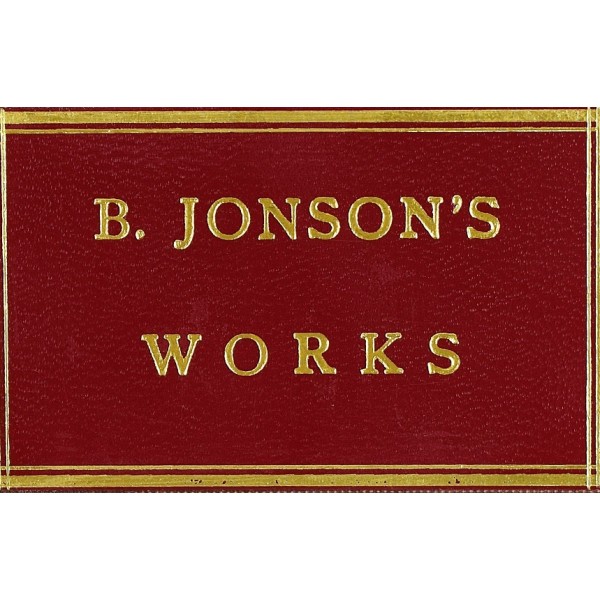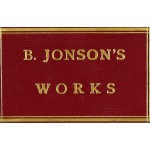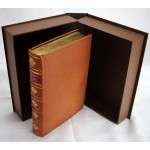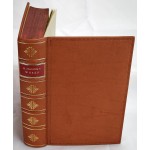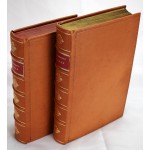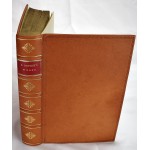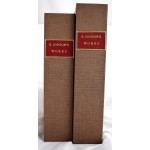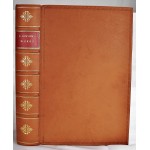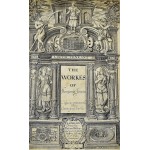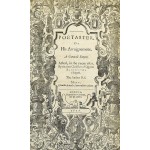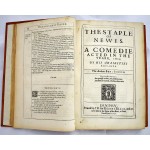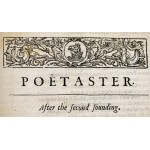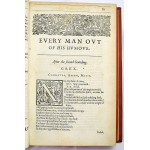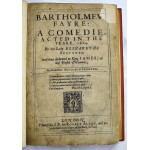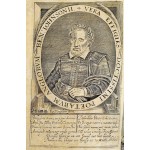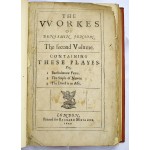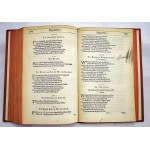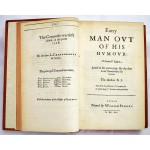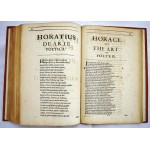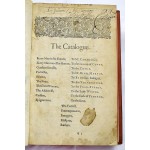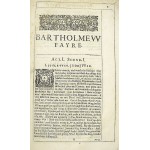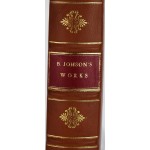The Workes of Benjamin Jonson. WITH: The Workes of Benjamin Jonson. The second Volume Containing These Playes, Viz. I Bartholomew Fayre. 2 The Staple of Newes. 3. The Divell is an Asse.
The Workes of Benjamin Jonson. WITH: The Workes of Benjamin Jonson. The second Volume Containing These Playes, Viz. I Bartholomew Fayre. 2 The Staple of Newes. 3. The Divell is an Asse.
Benjamin Jonson
London: Printed by W. Stansby, 1616 / Printed for Richard Meighen, 1640-41., 1616
Three volumes bound in two. Quarto. 26.5 cm and 29 cm. Housed in modern clamshell cases. Rebound in modern brown leather. Red leather spine labels with minimal rubbing to gilt of the second volume. 5 raised bands. Collated: Vol. I: [12], 1015 pp; Vol. 2: [12], 88, 75, [3], 93-170; Vol. 3: 292, 132, 122, 133-155, Title page and frontis provided from 1640 edition of Jonson's works. New end pages. Later states of title pages in Vol. 1; without woodcut borders (except Poetaster title page, which is first state with woodcut border). Scattered spotting and staining, pages trimmed. John Wilson Croker's copy, with bookplates of Frederick William Cosens and Samuel Cabot pasted inside the front board. Vol. II title page mounted, title page and Bartholomew Faree well soiled, loss to upper corner.
Jonson's 1616 publication of the Workes of Benjamin Jonson in folio marked not only a key moment in the career of the writer, but also a watershed in the history of print culture. Up until Jonson published his plays in folio, the format had been reserved for the collected works of deceased authors, who had been acknowledged by posterity, not by themselves, as "great." The Grolier English 100 imparts "Jonson is said to have prepared the play for the press, himself, and one or two matters of editing, which seem unusually careful when compared with other folio collections, certainly appear to show the author's hand." Pforzheimer furthers, "Jonson began the preparation of this definitive edition in 1612. He used the quarto texts wherever available but scrupulously and systematically revised them, cutting out many marginal notes, altering the spelling, typography, and punctuation in accordance with a consistent if somewhat pedantic plan and introducing considerable editorial matter. The result is that this folio edition may be regarded as authoritative." These two exceptional folio Workes, rarely found together, affirm Dryden's conclusion that if "Shakespeare was the Homer or father of dramatic poets, Jonson was the Virgil." (Allibone I:998). Ref. Greg pp. 1070-82; Pforzheimer 559. STC 14751; STC 14754a
